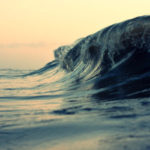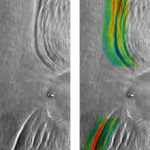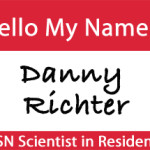 It stands to reason that a place blessed with the mountains, beaches, and emerald forests along the Olympic Coast of Washington State in Pacific Northwest should be equally beautiful, productive, rich, and wonderful on the continental shelf just offshore- 200m or 300m below the tideline.
It stands to reason that a place blessed with the mountains, beaches, and emerald forests along the Olympic Coast of Washington State in Pacific Northwest should be equally beautiful, productive, rich, and wonderful on the continental shelf just offshore- 200m or 300m below the tideline.
The Olympic Coast is a highly productive temperate marine environment with shelf waters along the continental margin reaching depths from 100- 600m. The Olympic Coast National Marine Sanctuary (OCNMS) rests on the continental shelf mostly, but runs all the way from the shelf break to the intertidal zone, with the awe inspiring seastacks pictured nearshore. The dark water of the shelf zone is home to commercial groundfish and their fishermen, but also home to big red and purple gorgonian trees that suffer collateral damage from these fisheries. Complex submerged topographies host large white Desmophyllum sp. cup corals as big as your fist, and myriad invertebrates like pom-pom anemones, whelks, ophiuroids, and seastars more than 0.5m across.
Last week, OCNMS investigators released a report detailing these findings from their deep water benthic surveys in a Marine Sanctuaries Conservation Series document called “Observations of Deep Coral and Sponge Assemblages in Olympic Coast National Marine Sanctuary, Washington“, by Mary Sue Brancato, Ed Bowlby, Steve Intelmann and Katie Brenkmann from the NOAA/NOS National Marine Sanctuary Program and Dr. Jeff Hyland from NOAA/NOS National Center for Coastal Ocean Science.
The investigators surveyed fished areas and closed areas within the sanctuary using the Candian ROPOS ROV for deep-water dives up to 52 hours long (!!) in June 2006. I was lucky to tag along to help collect and document deep water gorgonian species. The science party was small (~6 people), but it’s amazing how much was discovered in the two week cruise. The research was well organized. The ROV never faltered. Earlier cruises using multibeam data and side scan sonar helped build the research design. The observations in this report are highlights of a larger picture to unfold in coming years.
The cruise document describes a rare occurrence of Lophelia pertusa in abundance at a few different sites in the North Pacific, adds about eight new species of deep-sea gorgonians to the Sanctuary’s species list, identified important habitat functions for these species, and indicates one potentially new species from the Sanctuary waters- a “ghostly” white Stylaster sp. hydrocoral (pictured below, ~4″ tall with hagfish and shrimp associates).
You can download the Brancato et al 2007 report here, check the photo gallery, and enjoy more Olympic Coast observations from the Sanctuary website, or from articles Craig posted and I elborated upon in a tribute to Carl Sagan at the old Deep Sea News… you know … back in the day.

Photo credits:
John Marshall for seastacks image http://www.johnmarshallphoto.com/
NOAA/OCNMS for Stylaster sp. with hagfish and shrimp.





